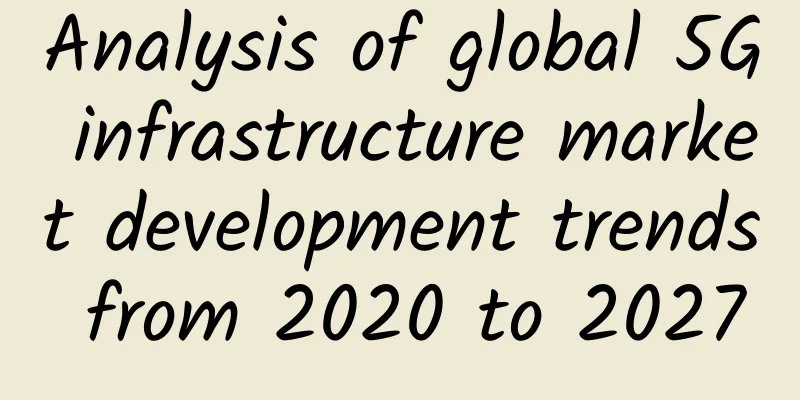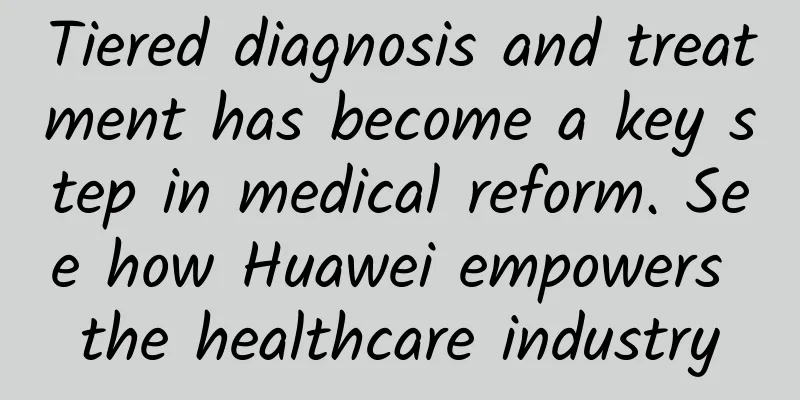Analysis of global 5G infrastructure market development trends from 2020 to 2027

|
Market research firm Grand View Research recently released a report on the development of the global 5G market. According to the report data, the global 5G infrastructure market size was only US$1.9 billion in 2019. However, from 2020 to 2027, the market will usher in rapid development, and is expected to grow at a compound annual growth rate (CAGR) of 106.4% during this period. 5G infrastructure is primarily a combination of Radio Access Network (RAN), core network, and backhaul and transport. Backhaul and transport networks include optical fiber or microwave antennas. The growing demand for low-latency enhanced bandwidth connectivity for many mission-critical applications such as vehicle-to-everything (V2X) and drone connectivity is expected to drive market growth. 5G technology is expected to provide improved user experience for a variety of applications, including ultra-high-definition (UHD) video, seamless video calls, and virtual reality (VR) and augmented reality (AR) gaming. In order to survive in a highly competitive environment, some manufacturing plants are focusing on technological transformation to improve overall productivity, operational efficiency and reduce costs. At the same time, the continued emphasis on improving energy monitoring and management, as well as the need for better control of energy generation and distribution networks, is expected to promote the deployment of 5G infrastructure during the forecast period. Some of the largest economies, such as the United States and China, are expected to continue to invest heavily in the provision of healthcare facilities. For example, the U.S. National Health Expenditure Accounts (NHEA) project that overall healthcare spending in the United States will reach approximately $6 trillion by 2027, with a compound annual growth rate of nearly 5.5% from 2018 to 2027. The healthcare industry, especially in developed economies, has begun emphasizing the importance of concepts such as remote diagnosis and surgery for patients. Hence, the need for next-generation technologies and related infrastructure to provide stable data connectivity during remote patient surgeries is expected to drive market demand in the coming years. The global outbreak of COVID-19 will certainly delay the implementation and investment of 5G infrastructure due to the disruption of further trials and tests required to verify the stability and processing performance of 5G standalone networks. The ongoing pandemic has also brought additional impacts to telecom regulators, many of which have postponed plans for 5G spectrum auctions, which has had an adverse impact on market growth and development. For example, governments of several major countries, including France, Spain, and Australia, have temporarily postponed spectrum auctions for multiple frequencies, including Sub-6 GHz and mmWave. In addition, exports of 5G New Radio (NR) telecommunication equipment to the global market from major countries, such as China and the United States, have dropped significantly due to the COVID-19 pandemic. The above factors are collectively expected to pose challenges to market growth, especially in the coming years. 5G communication infrastructure RAN dominated the 5G infrastructure market in terms of market value, with a market share of 46.2% in 2019. This is attributed to the strong deployment of 5G RAN in multiple low-power radio access nodes (MACRO) base stations across the globe. The trend of deploying virtualized and centralized RAN is rapidly increasing among network service providers to reduce the overall infrastructure cost and network complexity. Furthermore, the use of software-defined networking (SDN) technology to improve the operational efficiency of virtualized RAN will play a key role in the growth of the overall segment during the forecast period. The market size of the 5G core network segment is estimated to reach nearly $128 billion by 2027. The core network plays a vital role in processing network traffic and storing consumer information. In addition, leading network providers are migrating to installing cloud-based 5G core networks to reduce total cost of ownership (TCO) and provide smooth connectivity. For example, in April 2020, Ericsson and British Telecom PLC (BT) reached an agreement to deploy a fully cloud-native mobile packet core for standalone and non-standalone networks to meet the demand for high-speed bandwidth for individual consumers and enterprises. 5G spectrum In terms of market size, sub-6 GHz accounted for 84.4% of the market share in 2019. This is attributed to the huge investment of major communication service providers in acquiring mid- and low-band frequencies to provide high-bandwidth services to consumers, businesses, and industries. Recently, governments of China, the United States, Japan, South Korea, and many other major countries and regions have released sub-6 GHz spectrum to provide high-speed Internet services in their countries or regions. Millimeter waves (mmWave) are high-band frequencies that provide very low latency to enhance bandwidth capacity. These bands are primarily suitable for applications where ultra-reliable connectivity is a prerequisite, especially in remote patient surgery and vehicle-to-vehicle (V2V) connectivity. In addition, some governments in developed economies have released mmWave spectrum bands to provide enhanced data services. For example, the Federal Communications Commission (FCC) of the United States has released several millimeter wave frequencies, including 24.25–24.45 GHz, 47.2-48.2 GHz, 24.75–25.25 GHz, and 38.6-40 GHz, in order to provide low-latency connectivity for applications such as autonomous vehicles. In addition, other countries such as Russia, Japan, South Korea, and Italy have also released millimeter wave frequencies to enhance data services. Therefore, it is expected that major governments in many countries and regions will focus on releasing millimeter wave frequencies, which will promote the growth of the millimeter wave market segment during the forecast period. 5G Applications The industrial segment dominated the market share with a revenue share of over 20% in 2019. This is attributed to the surging demand for 5G services to provide seamless connectivity for devices such as ultra-high-definition wireless cameras, augmented reality helmets, and autonomous guided vehicles (AGVs). The growing need to establish continuous communication between industrial applications is expected to drive the growth of the industrial sensors segment during the forecast period. In addition, another important industrial application such as collaborative and cloud robotics is expected to witness strong growth in the coming years, thereby driving the market demand in the industrial sector. The deployment of 5G infrastructure in government and public safety facilities is also increasing due to the urgent need to establish fast communications with first responders in emergency situations. In the wake of the ongoing pandemic, the demand for next-generation high-speed networks is expected to surge, especially for healthcare applications. Even after the pandemic is contained, digital services including telemedicine and remote patient monitoring will continue to gain popularity, ensuring strong market growth. In addition, the energy and utilities sector is expected to show tremendous growth owing to the growing demand for high-speed Internet connectivity across energy production and distribution applications. Similarly, the growing need to improve connectivity from remote locations for effective monitoring to ships and containers/vessels is expected to further drive the adoption of 5G technology and related infrastructure in the transportation and logistics sector. 5G Network Architecture In terms of market value, the non-standalone (NSA) network architecture dominated the market share in 2019 with a share of more than 85%. This is attributed to the early launch of non-standalone networks across the globe. Non-standalone networks are usually deployed in integration with existing LTE infrastructure. In addition, several leading service providers such as AT&T, Verizon, China Mobile and China Mobile have deployed 5G NSA network models for basic use cases such as cloud-based AR/VR gaming and UHD video. Rapidly advancing industrial digitalization is paving new market revenue streams for service providers around the world. To provide uninterrupted connectivity between machines, ultra-reliable high frequencies with low-latency connectivity are a prerequisite. Similarly, unified bandwidth capacity with minimal latency required to establish seamless communication between driverless cars is expected to drive market demand in the transportation and logistics sector. Hence, the growing demand for faster data speeds across the aforementioned industry verticals is expected to drive the growth of the standalone market at a CAGR of 131.7% from 2020 to 2027. Regional distribution of 5G market The Asia Pacific region accounted for 36.9% of the market share in 2019, which is due to the active deployment of 5G new radio infrastructure by major communication service providers (such as China Mobile); In addition, the governments of countries and regions such as Japan, China, and South Korea are highly focused on releasing multiple sub-6GHz and mmWave frequencies to meet the growing demand for high-speed data connections from a large and growing user base. Therefore, the market in these regions will achieve strong growth during the forecast period. With the presence of large service providers such as AT&T, Sprint, T-Mobile, and Verizon; the U.S. market is also expected to grow at a higher CAGR during the forecast period. The significant investments made by the above-mentioned companies in deploying 5G infrastructure are expected to help the market reach USD 101.9 billion by 2027. For example, in September 2018, T-Mobile signed a $3.5 billion agreement with Ericsson to support T-Mobile's 5G network infrastructure. In addition, in this deal, Ericsson will provide T-Mobile with 5G New Radio (NR) hardware and software to provide high-speed Internet. In addition, in the coming years, the further growth in the spiraling demand for building autonomous plants for high-speed data networks is expected to further increase the adoption rate of next-generation network infrastructure. Major 5G equipment suppliers and market share Today, the 5G market is highly consolidated, with the top four players accounting for more than 50% of the total market revenue in 2019. Major players are working hard to establish strategic partnerships with service providers to deploy the next-generation network infrastructure and gain first-mover advantages. For example, China Mobile recently established partnerships with several key infrastructure providers, including Huawei, ZTE, and Ericsson, to deploy 5G RAN in China. Huawei has received more than 55% of the total contract value for China Mobile to deploy 5G base stations in China. In addition, China Mobile plans to implement nearly 300,000 5G sites in China by 2020. However, in the wake of the ongoing pandemic, the deployment of both 5G technology and related infrastructure around the world has dropped sharply. Leading infrastructure providers are actively targeting major European countries and regions to install their next-generation networks, with a particular focus on providing enhanced bandwidth capacity for public safety applications. For example, in April 2020, Ericsson established a partnership with Erillisverkot Group, a Finnish state government agency responsible for providing public safety communications networks in the country, to provide 5G core network hardware solutions for mission-critical applications. The next-generation network is scheduled to be operational in mid-2021. Some of the prominent players in the 5G infrastructure market include:
|
<<: The 5G infrastructure market will reach $496.6 billion in 2027, with a CAGR of 106.4%.
>>: How long can the operators’ hard-earned V-shaped rebound last?
Recommend
2021 China Internet Haha List 3: Top Ten Keywords
With change comes new opportunities. The Internet...
Virtono: 25% off San Jose VPS starting at 2.2 Euros per month, free double memory
Virtono is a foreign VPS hosting company founded ...
Huawei and Longgang join hands to build an intelligent city and promote digital China
On November 16, the China (Shenzhen) Smart City S...
With another 600,000 base stations added in 2021, will the number of 5G users increase dramatically?
As we all know, my country's operators have b...
Huawei releases the "Digital Energy Zero Carbon Network Solution" to fully help operators achieve carbon neutrality goals
At the Huawei media communication meeting held du...
Google open-sources network-opt for optimizing network topology
The Internet has become the most important issue ...
Tencent Cloud Flash Sale: 1C2G5M=488 yuan/3 years, 1C1G3M=268 yuan/3 years, available in Shanghai/Beijing/Guangzhou/Chengdu
Tencent Cloud's long-term flash sales activit...
Why do I always see pop-up ads? Yes, it’s a DNS problem
What is DNS? Each IP address can have a host name...
LOCVPS: Hong Kong Cloud/Los Angeles Light Package is online, KVM monthly payment starts at 29.6 yuan
LOCVPS is a long-established Chinese VPS service ...
TmhHost: Los Angeles CN2 GIA quarterly payment starts from 100 yuan, US CN2 GIA line 200Gbps high-defense VPS 20% off
TmhHost has launched its latest promotion, involv...
5G deployment plan postponed to 2021, will operators agree?
In 2020, the sudden outbreak of COVID-19 is havin...
What does a 5G network look like? A simple article to understand
[[311978]] Whether it is 2G, 3G, 4G or 5G, the mo...
Chairman of the five major operators talks about 5G: "Team competition" and "Individual competition" on the road to 5G
September 1 news, at the main forum of the "...
GreenCloudVPS: $30/year 500G hard drive VPS, 10Gbps bandwidth, Singapore (non-direct connection) data center
GreenCloudVPS recently installed new machines in ...
RAKsmart cloud server flash sale starts at $1.99/month, popular VPS host $0.99/month, US/Hong Kong/Japan/Singapore data center
At the beginning of the month, the tribe shared i...









